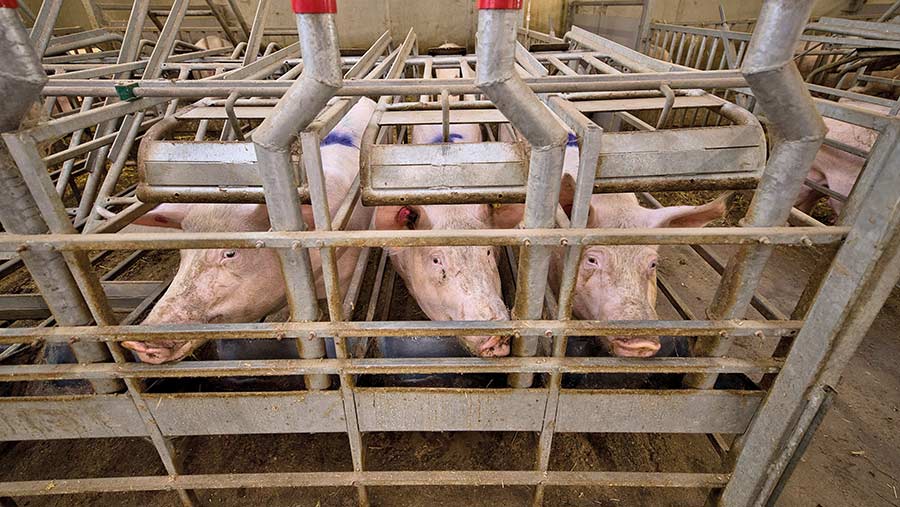5 tips to get the most from artificial insemination in pigs
 © Richard Stanton
© Richard Stanton A crucial stage of the artificial insemination (AI) process is the period between semen doses leaving the breeding company and them being used to inseminate sows.
If doses aren’t stored and handled correctly, it can become costly for your business and productivity is likely to fall.
Rough handling, temperature shock, and exposure to light can all damage semen.
See also: Why colostrum is so important for newborn pigs
The location and layout of AI areas will vary from farm to farm, however, some basic rules relating to semen storage and handling must be followed to make sure the quality of AI doses remains high right up until the time they are used.
Tina Beckmann, AHDB knowledge exchange manager, lists five top tips for getting the most out of your AI doses.
1. Use the right equipment to store AI doses
Use a dedicated, temperature-controlled cabinet to store AI doses and position it where it won’t be exposed to temperature extremes.
Make sure your storage cabinet:
- Heats/cools effectively and is fan-assisted
- Meets the needs of your unit in terms of operating limits. Never exceed the cabinet’s design capacity – contact your cabinet supplier for advice
- Is large enough to house doses loosely, allowing air to circulate between them
- Has a door or lid that can be kept securely closed
- Is used exclusively for AI storage.
Store semen doses horizontally, not upright. This ensures maximum contact between sperm and the diluent in which it is preserved.
This is important for maintaining the availability of nutrients to the sperm, protecting semen viability, and maximising shelf life.
2. Keep the temperature stable
If the temperature fluctuates beyond the recommended figures, motility can fall and sperm agglutination can occur – this is when sperm stick together, and the total number of viable sperm is reduced.
- A temperature of 15-19C should be maintained in the dedicated storage cabinet
- Semen shelf life will be significantly shortened if storage temperatures rise above 19C
- The viability will also be reduced, and sperm may even suffer cold shock and die, below 15C
- Use a min-max thermometer to monitor the temperature inside the storage cabinet.
3. Maintain good records
Keep a simple filing system to ensure timely use of semen doses. This should include:
- Stock IDs and numbers
- Delivery dates/times
- Use-by dates so the oldest semen can be used first (and expired semen discarded).
4. Implement good practice in the service area
Calculate the number of doses needed for one hour’s worth of inseminations. A useful rule of thumb is to allow for eight inseminations an hour for each inseminator.
Only remove the required number of doses from storage at any one time.
This prevents unnecessary and prolonged exposure of semen to temperature fluctuations and avoids returning unused and possibly damaged semen to storage.
Keep a detailed log of any semen doses that are returned from the service area to storage (providing semen quality has not been compromised).
Key points to consider when taking AI from the storage cabinet to the service area include:
- Using a soft bag with separate compartments, each holding a small number of doses
- Using a temperature-controlled, portable semen storage box to store AI doses in the service area
- Ensuring insulated containers are kept between 15-19C
- Removing doses as they are needed for insemination, not before the catheter has been introduced
- Always replacing the lid promptly and securely.
Gel packs can help buffer ambient temperatures; store these in the temperature-controlled semen cabinet so they are always at the right temperature and make sure they are kept clean.
5. Get the timing of insemination right
A heat map can be useful to identify the most suitable times to inseminate.
Aim for two quality inseminations when sows are showing a strong standing reflex as it is impossible to know exactly when ovulation will occur or to inseminate every female during their optimum period.
To achieve this, consider serving sows up to three times, where appropriate or under advice, no more than 24 hours apart.
For gilts, returns, and older sows, consider serving three times – for example, in the morning, the afternoon, and the following morning.
